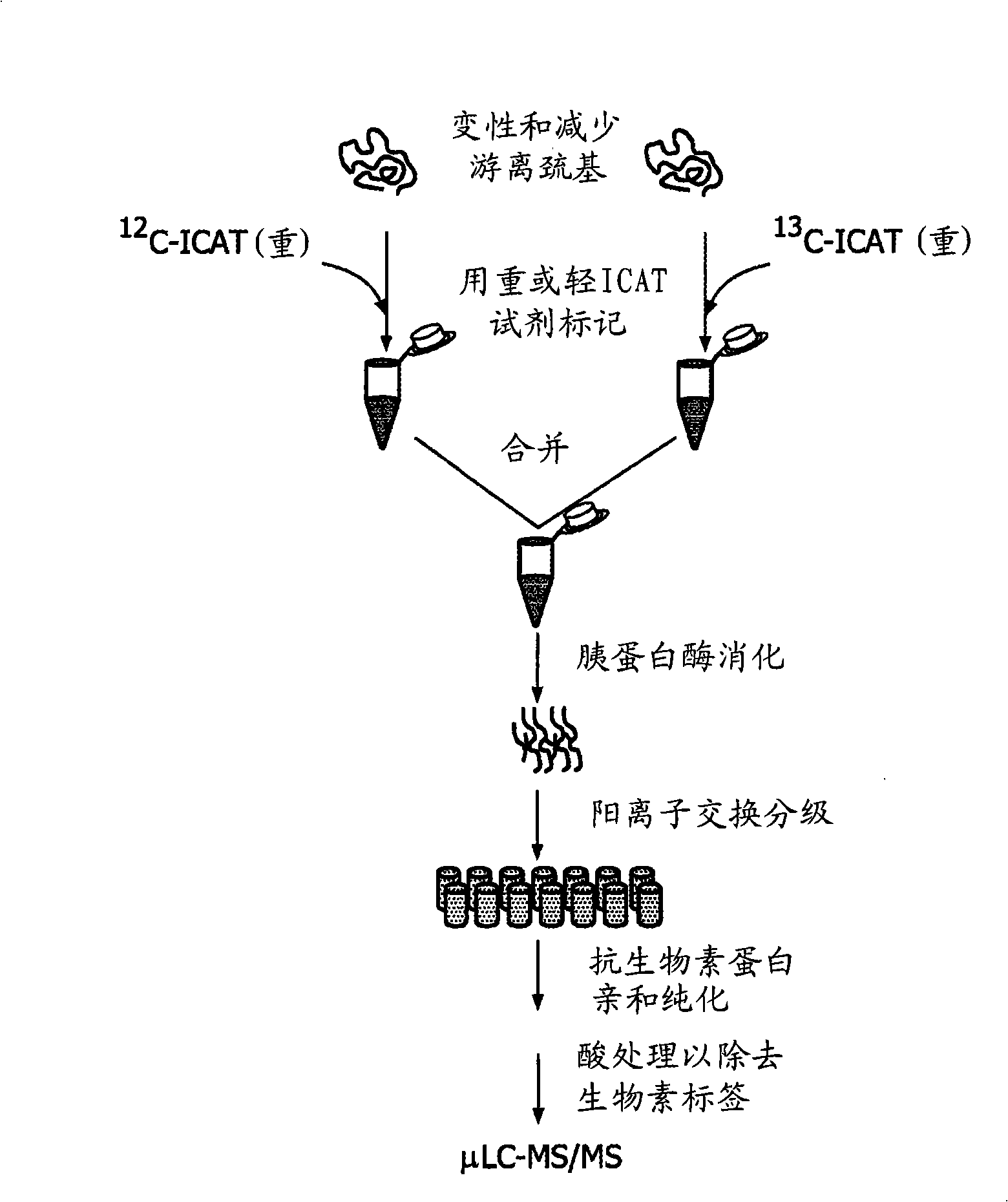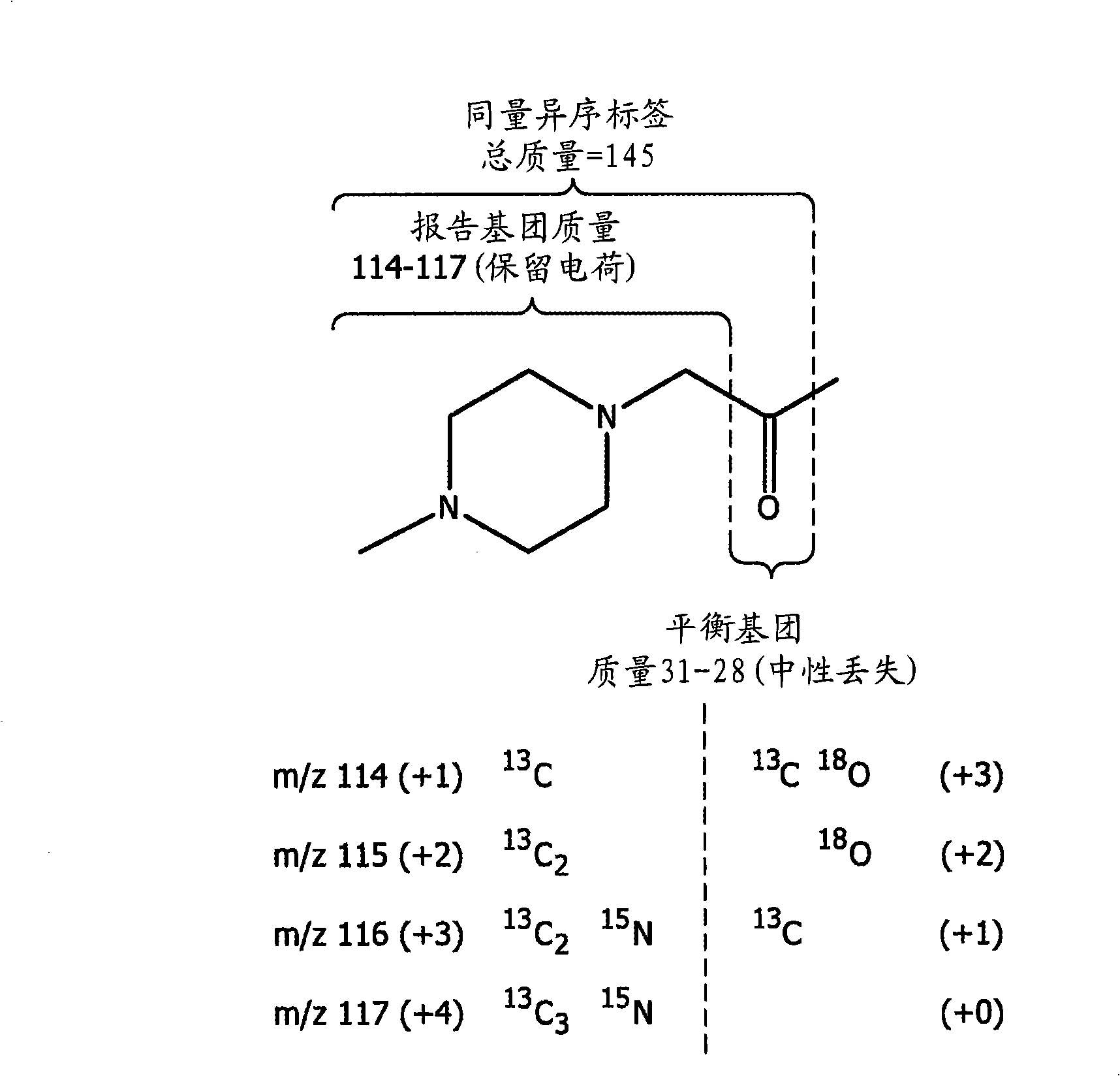Compounds and methods for double labelling of polypeptides to allow multiplexing in mass spectrometric analysis
A marker, labeling technology, applied in the field of compounds and methods for double-labeling of peptides to allow multi-channelization in mass spectrometry analysis, can solve the problems of lack of automation and reproducibility, time-consuming analysis, etc., to achieve multi-channel Improved performance and reduced analysis time
- Summary
- Abstract
- Description
- Claims
- Application Information
AI Technical Summary
Problems solved by technology
Method used
Image
Examples
Embodiment 1
[0239] Example 1: Relative expression levels of individual peptides using isotopic and isobaric labeling Determination of
[0240] Using labeling reagents comprising unique combinations of isobaric and isotopic label components, the relative amounts of individual peptides in a mixture of labeled peptides can be determined by different combinations of isobaric and isotopic labels. This is exemplified by the following theoretical examples. Eight samples (1 to 8) of internal peptides were labeled according to the scheme in Table 4 with isotopic labels a or b and combinations of isobaric labels A, B, C and D.
[0241] Table 4: Determination of Relative Concentrations of Labeled Peptides in the Mixture
[0242]
[0243] Thereafter, all samples were pooled and subjected to chromatography in which labeled peptides behaved in the same manner irrespective of the specific isotopic / isobaric label component combination on the peptide. Differentially labeled versions of the peptid...
PUM
 Login to View More
Login to View More Abstract
Description
Claims
Application Information
 Login to View More
Login to View More - R&D
- Intellectual Property
- Life Sciences
- Materials
- Tech Scout
- Unparalleled Data Quality
- Higher Quality Content
- 60% Fewer Hallucinations
Browse by: Latest US Patents, China's latest patents, Technical Efficacy Thesaurus, Application Domain, Technology Topic, Popular Technical Reports.
© 2025 PatSnap. All rights reserved.Legal|Privacy policy|Modern Slavery Act Transparency Statement|Sitemap|About US| Contact US: help@patsnap.com



